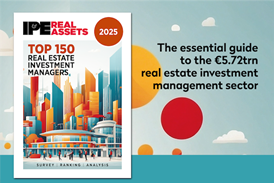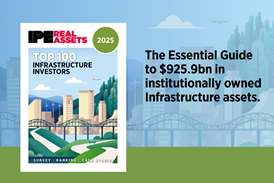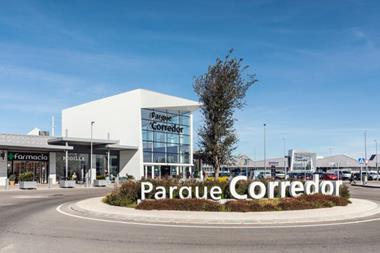Real estate has become a borrower’s paradise, in which financing is not only easily secured but also becoming varied and creative again. In the UK more and more lending is being done by non-banks, a trend which is likely to spread to Europe. These were some of the key conclusions to come out of the recent conference organised by the Commercial Real Estate Finance Council (CREFC) Europe in London.
Real estate has become a borrower’s paradise, in which financing is not only easily secured but also becoming varied and creative again. In the UK more and more lending is being done by non-banks, a trend which is likely to spread to Europe. These were some of the key conclusions to come out of the recent conference organised by the Commercial Real Estate Finance Council (CREFC) Europe in London.
The financial crisis caused many casualties, but it also generated a process of creative destruction which has led to a vibrant and fast-changing market, the conference heard.
Nowhere is this more apparent than in securing finance. With banks still restructuring and finding it difficult to expand their lending, alternative lenders - from insurance companies to opportunistic funds and private equity firms - have become more active. Now it is increasingly debt, not just equity investors, that are struggling to find enough opportunities. As a result, debt finance is increasingly available.
The distinction between the two is becoming so blurred that a new term has been coined: dequity. ‘We do not distinguish between debt and equity, but talk of dequity deals, whether it’s equity dressed up as debt or debt with the characteristics of equity,’ said Andrew Petersen, partner at K&L Gates LLP, which hosted the conference at its London offices. ‘London-based investors are increasingly looking to buy debt in other European countries.’
Suspicious minds
Despite the fact that equity investors with long memories are still suspicious of structured finance, the market seems to be pushing for change. ‘It is definitely a time to be creative with the financing. There are a lot of changes in the UK that may not yet be so obvious in the rest of Europe,’ said Hans Vrensen, part-time consulting director on research and education at CREFC Europe. ‘Despite some advances, there is still a cultural divide between the debt side and the equity side of the market. Through its conferences and new executive education programme planned for July, CREFC Europe is helping build a better understanding between them, which would be a good thing,’ he said.
The positive aspect of this emergence of non-bank lenders is that it offers more choice, more flexibility and more channels of funding. The potentially negative aspect is that the playing field is not level, as non-bank lenders are not as heavily regulated as banks.
‘It's a borrower’s market and it is getting to be a difficult time for lenders, as there is always someone out there who can do it cheaper,’ said Hugh Fraser, director of M7 Real Estate. ‘But pricing is a secondary consideration when I choose a lender: what matters to me is the flexibility to get new leases in place and do the things we are good at, and for that you need a close relationship with your lender. I am happy to pay more for that certainty.’
Mutual trust
A relationship of mutual trust with the lender is so important that in order to maintain it borrowers are willing to pay more – a loyalty flexibility pricing inflection point of 30 basis points would be acceptable, the conference delegates agreed. This is because certainty of execution is crucial, especially when buying challenging assets, said Cameron Spry, head of investments at Tristan Capital Partners: ‘In a more competitive market for acquirers, the fundamental relationship point is delivery. We need deliverability all down the chain, otherwise it gets uncomfortable for everyone.’
Competition has increased dramatically, as Morgan Garfield, founding partner of Ellandi, pointed out: ‘A few years ago there were two or three parties bidding for the same asset, but now it is more likely to be 10 or 12, so we are often outbid. The weight of capital is definitely a factor.’
The outlook for the market is positive, Spry continued: ‘This year is still attractive. A lot of assets are being traded out of companies that have changed their strategy or geographical focus and are selling their portfolios. The market is being driven by natural sellers to natural buyers like us, which is a good thing. Alarm bells will ring when firms like mine start trading with each other again, which is what happened at the end of the last cycle.’
The big question mark on the horizon regards interest rate rises, which experts agreed are the factor that could do the most damage to the recovery of the real estate market. ‘Small and gradual rate rises would not hurt, but a sharper correction would cause problems,’ said Spry. Opinions differ, but delegates agreed that any interest rate rises are unlikely to happen until the second half of 2016, which means the optimism will continue for a good stretch ahead.










